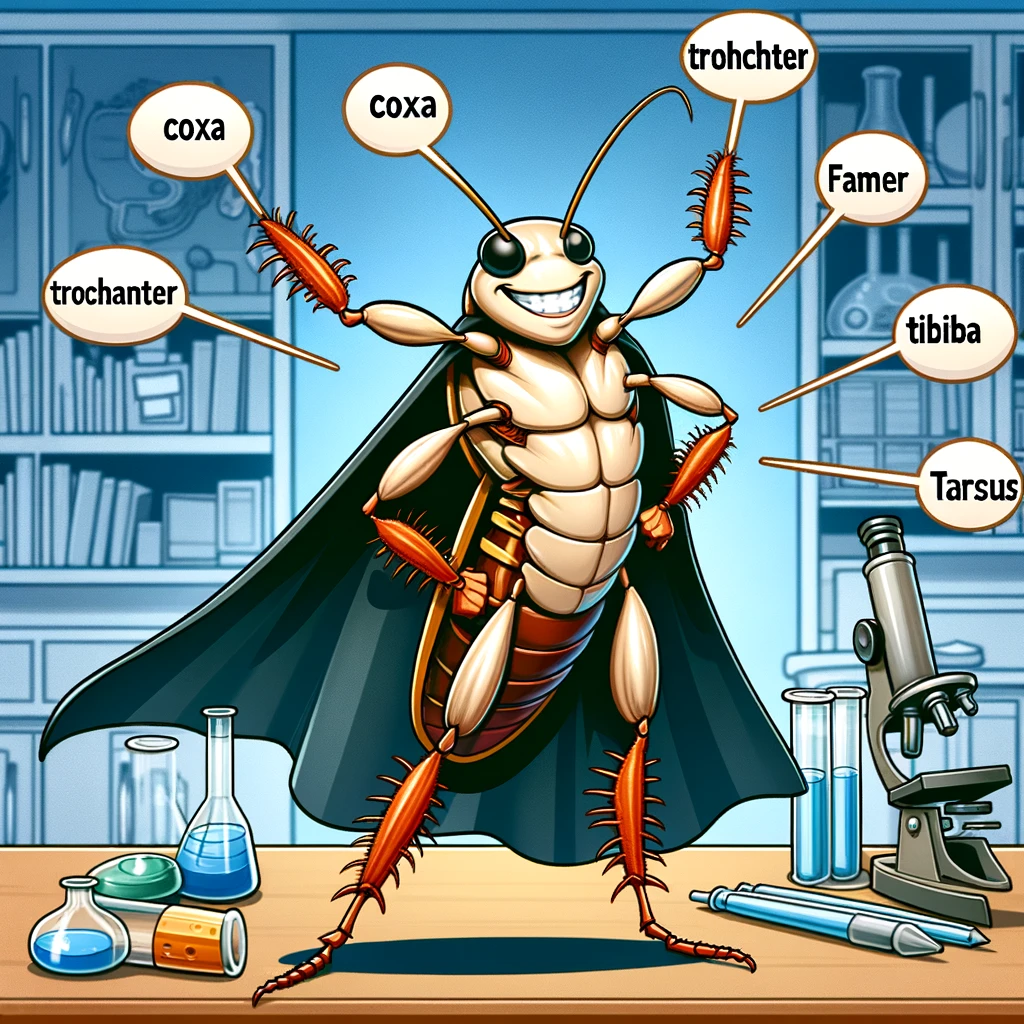How Many Legs Do Cockroaches Have?
 Cockroaches are fascinating yet often reviled insects that have been around for millions of years. One of the most distinctive features of cockroaches is their legs, which play a crucial role in their mobility and survival. In this article, we’ll explore how many legs cockroaches have, the anatomy of these legs, and their functions.
Cockroaches are fascinating yet often reviled insects that have been around for millions of years. One of the most distinctive features of cockroaches is their legs, which play a crucial role in their mobility and survival. In this article, we’ll explore how many legs cockroaches have, the anatomy of these legs, and their functions.
The Anatomy of Cockroach Legs
Number of Legs
Cockroaches, like all insects, have six legs. These legs are attached to the thorax, the middle segment of their body.
Leg Segments
Each cockroach leg is divided into several segments:
- Coxa: The base segment that attaches the leg to the body.
- Trochanter: The small segment following the coxa.
- Femur: The thick, muscular segment that provides strength.
- Tibia: The long, slender segment that extends from the femur.
- Tarsus: The foot-like segment divided into smaller parts, ending in claws that help with gripping surfaces.
Functions of Cockroach Legs
Movement
Cockroaches are known for their incredible speed and agility, which is largely due to their well-adapted legs. Their legs allow them to:
- Run Quickly: Cockroaches can move at impressive speeds, which helps them escape predators and find food.
- Climb Surfaces: The claws on their tarsus segments enable them to climb vertical surfaces and navigate through various environments.
Sensory Functions
Cockroach legs are equipped with sensory hairs and structures that help them detect changes in their environment. These sensory functions include:
- Detecting Vibrations: Sensory hairs can pick up vibrations in the ground, alerting cockroaches to approaching threats.
- Sensing Chemicals: Their legs can also detect chemical cues, aiding in finding food and mates.
Adaptations for Survival
Regeneration
One remarkable feature of cockroaches is their ability to regenerate lost legs. If a cockroach loses a leg due to predation or injury, it can regrow the limb over several molting cycles.
Specialized Legs
Different species of cockroaches have legs adapted to their specific habitats and lifestyles. For example:
- Burrowing Cockroaches: These cockroaches have strong, spade-like legs for digging.
- Climbing Cockroaches: Species that live in trees have legs with more developed claws for climbing.
Interesting Facts About Cockroach Legs
Speed and Agility
Cockroaches are among the fastest insects, capable of running at speeds up to 3 miles per hour. Their legs are perfectly designed for rapid, agile movements.
Orientation and Balance
Cockroaches use their legs not only for movement but also for maintaining balance and orientation. Their legs work in coordination with their antennae to navigate complex environments.
Cockroaches have six well-adapted legs that are crucial for their survival. These legs not only provide them with the ability to move quickly and escape threats but also play a role in their sensory perception and environmental adaptation. Understanding the anatomy and function of cockroach legs can provide insights into their remarkable resilience and adaptability.
If you’re dealing with a cockroach infestation, remember that their incredible mobility and ability to regenerate make them tough to eliminate. Regular cleaning, sealing entry points, and using effective pest control methods are essential. For severe infestations, consider contacting a professional pest control service for expert assistance.
- The Life Span of a Cockroach
- Do Cockroaches Eat Clothes?
- Do Cockroaches Have Teeth?
- Shrimps and Cockroaches
- Will Sleeping with the Light On Keep Cockroaches Away?
- How to get roaches out of your car overnight
- Do Cockroaches Feel Pain?
- How Many Legs Do Cockroaches Have?
- Comparing Cockroach Eggs Size for Different Types of Cockroaches
- Identifying a Cockroach Bite on the Lips or Face
- Black Water Bug Identification and Control
- Why Do Water Bugs Come Out At Night?
- What Does Roach Rash Look Like?
- Can Cockroaches Bite Your Eyelid?
- Can Cockroaches Live in Your Balls?
- How did cockroaches get their name?
- Why Do Cockroaches Shed Their Skin?
- What Smell do Palmetto Bugs Hate?
- Baby Palmetto Bug: Identification and Control
- Cockroach Eggs vs Poop: How to Tell the Difference
- How to Get Rid of Water Bugs
- How Long Can a Cockroach Live Without Air?
- The Lifecycle of the German Cockroach: From Egg to Adult
- Do Mice Eat Roaches
- Wood Roach vs. Cockroach

